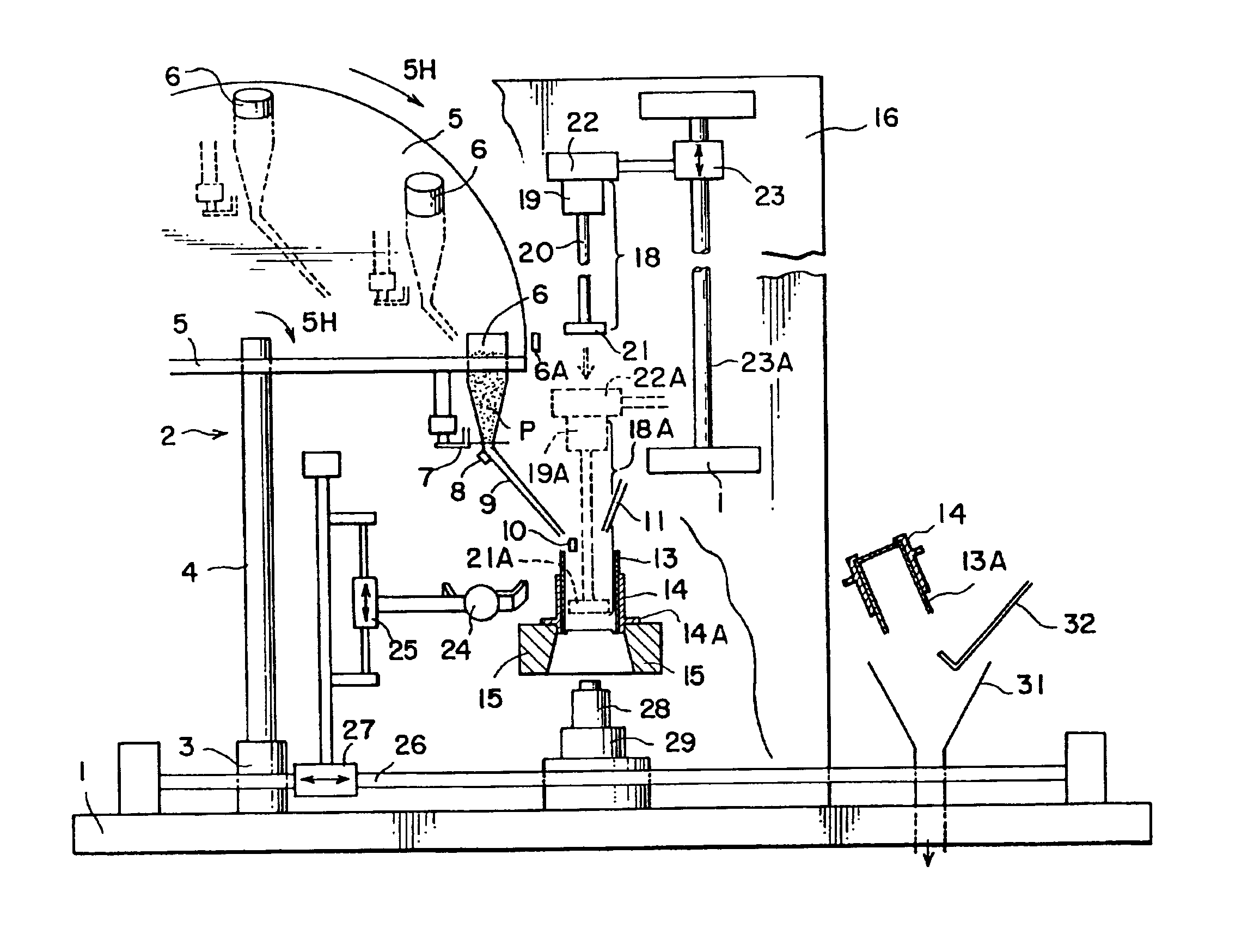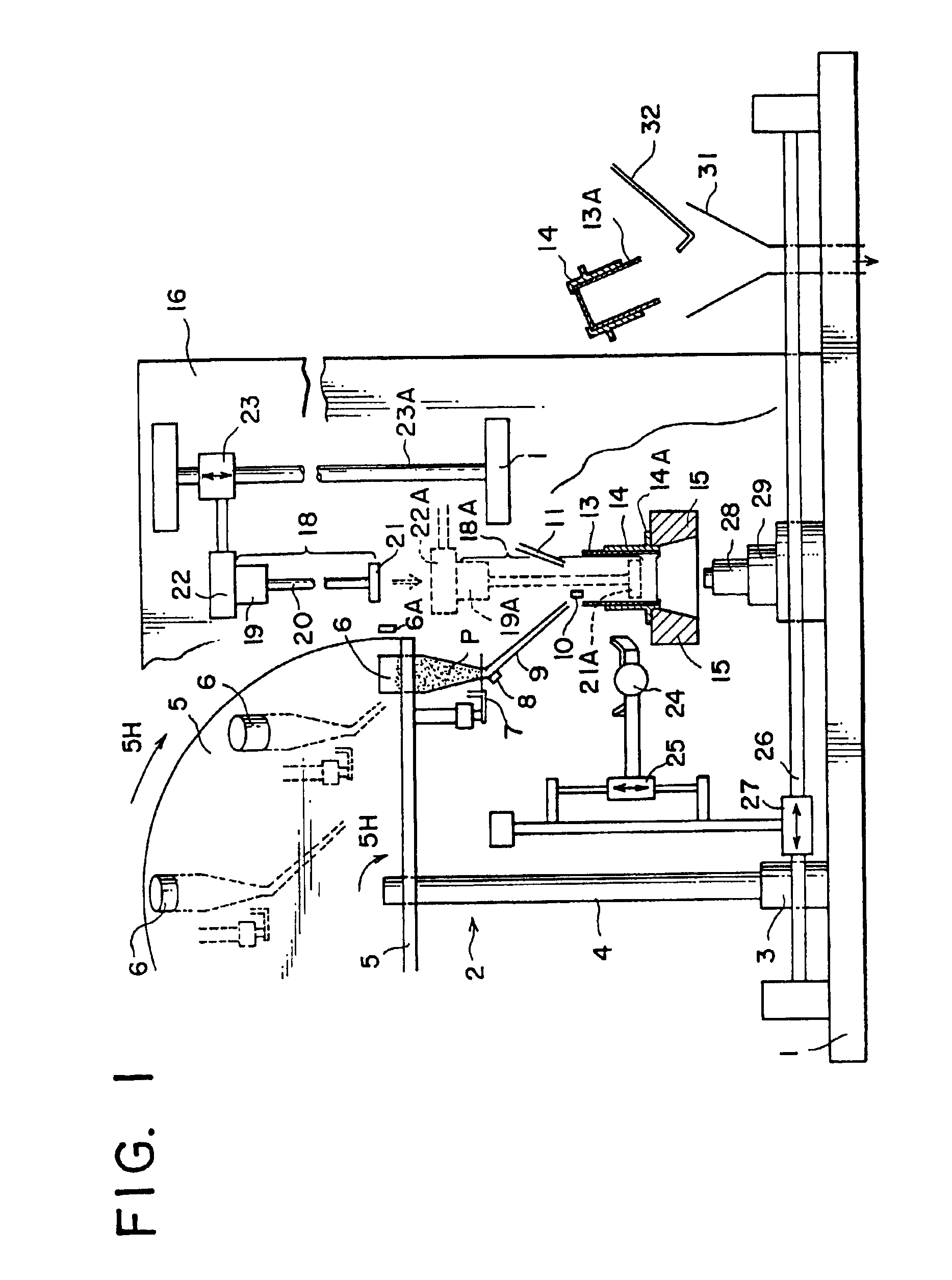Method for counting foreign matter particles in vinyl chloride-based resin powder and apparatus system therefor
a technology of vinyl chloride-based resin and foreign matter particles, which is applied in the field of counting foreign matter particles in the vinyl chloride-based resin powder and the apparatus system therefor, can solve the problems of insufficient time required for inspection of one sample of resin products, inability to ensure reliability or reproducibility of results, and inability to use vibrators to ensure high uniformity. , to achieve the effect of reliable and reproducible results
- Summary
- Abstract
- Description
- Claims
- Application Information
AI Technical Summary
Benefits of technology
Problems solved by technology
Method used
Image
Examples
example 1
A flat-bottom cylindrical glass bottle of 1 gallon capacity having a narrowed mouth, of which the bottom had a diameter of 25 cm, was charged with 1 kg of a homopolymeric polyvinyl chloride resin powder of a commercial grade (TK 1000, a product by Shin-Etsu Chemical Co.) and 2 kg of deionized water and then an aqueous solution of 10 g of a polyethyleneoxide in 100 g of deionized water was added to the vessel. As tightly sealed with a covering, the glass bottle was vigorously shaken for 3 minutes by hand to effect dispersion of the resin particles into the aqueous medium. The glass bottle containing the aqueous dispersion of the resin particles formed as above was kept standing still for 5 minutes to cause settling of the resin particles onto the flat bottom forming a layer of the deposited resin particles having an average thickness of 3.8 cm. The lower surface of the thus deposited powder layer was examined through the transparent glass bottom of the bottle taking 3 minutes. The nu...
example 2
The testing procedure was substantially the same as in Example 1 except that the amount of water initially taken was decreased from 2 kg to 1 kg. The layer of the VC resin particles deposited on the flat bottom of the vessel had an average thickness of 3.8 cm. The number of foreign matter particles detected by 30 times repetition of the procedure ranged from 32 to 52 in the 18 testing runs after omission of the smallest 6 and largest 6 values among the 30 values indicating good reproducibility of the results obtained by the method.
example 3
A glass-made Erlenmeyer flask of 3 liter capacity having a flat bottom of 15 cm diameter was charged with 10 g of a polyvinyl chloride resin of a commercial grade (TK 700, a product by Shin-Etsu Chemical Co.) and 1 kg of water of in-plant supply followed by the addition of an aqueous solution of 1 g of a sodium alkylbenzene sulfonate in 100 g of water. The flask as tightly stoppered was vigorously shaken by hand for 1 minute to effect dispersion of the resin particles in the aqueous medium and then the flask was kept standing still to allow settling of the resin particles onto the bottom of the flask to form a layer of the deposited resin particles having a thickness of 0.2 cm. The number of foreign matter particles deposited on the bottom of the flask was visually counted through the bottom of the flask taking about 3 minutes. This testing procedure was repeated 50 times to obtain results that the number of the foreign matter particles detected in each testing run was 2 or less in ...
PUM
| Property | Measurement | Unit |
|---|---|---|
| thickness | aaaaa | aaaaa |
| thickness | aaaaa | aaaaa |
| weight fraction | aaaaa | aaaaa |
Abstract
Description
Claims
Application Information
 Login to View More
Login to View More - R&D
- Intellectual Property
- Life Sciences
- Materials
- Tech Scout
- Unparalleled Data Quality
- Higher Quality Content
- 60% Fewer Hallucinations
Browse by: Latest US Patents, China's latest patents, Technical Efficacy Thesaurus, Application Domain, Technology Topic, Popular Technical Reports.
© 2025 PatSnap. All rights reserved.Legal|Privacy policy|Modern Slavery Act Transparency Statement|Sitemap|About US| Contact US: help@patsnap.com



